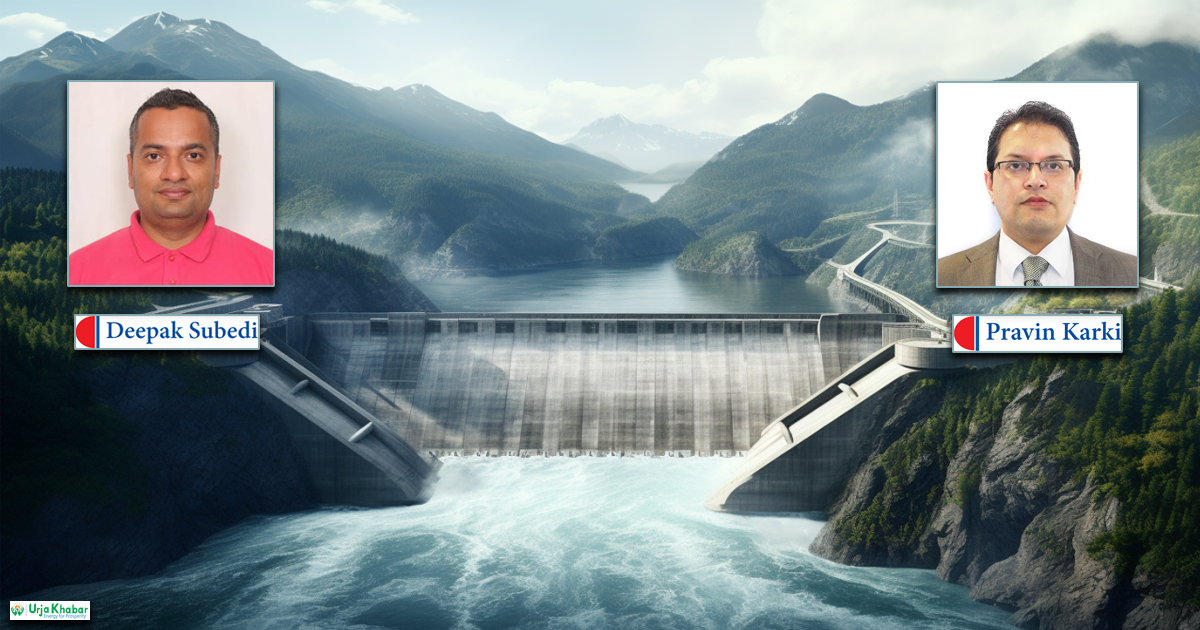
Since 1982, the Kulekhani hydropower dam has played a key role in Nepal’s development. Co-financed by the World Bank Groups’ International Development Association (IDA) in the mid-1970s as its first support to the power sector in Nepal, the scheme comprises a 114 meter tall dam that impounds a lake spread over two square kilometers. The dam diverts water to Kulekhani I, the first of a 3-plant cascade through a 6 kilometer tunnel.
On a recent visit to Kulekhani, a two-hour drive from Kathmandu, we met Tara Datta Bhatta, Nepal Electricity Authority’s (NEA) Plant Manager for Kulekhani I. Tracing back the history of the plant, he recounted how the plant was the backbone of Nepal’s national electricity supply from 1982 to 2002, before Kali Gandaki-a 144 MW run-of-river hydropower project-start generating power in 2002.
According to Bhatta, the plant currently serves as a power system backup on standby in case of an emergency or to supply power to the national grid when needed.

In addition to power, the reservoir is also generating opportunities for local tourism. The Kulekhani area has become a prime destination for domestic tourists and the fish harvested from the lake and boating have helped boost the local economy.“Kulekhani area now houses numerous hotels and resorts with the capacity to accommodate 2,000 guests and the dam is significantly enhancing local employment.” Says Krishna Shrestha, a local resident and business owner. “Due to this, many people who left the area in the 70s have started returning.”
Catalyzing the Impact of Hydropower

When the World Bank appraised the Kulekhani I Project in 1974, Nepal had an installed capacity of only 40 MW. The population at the time was 13 million and total GDP stood at USD 1,280 million – just US$ 100 per capita.
There were about 64,000 consumers of electricity, representing less than 3% of the total population. However, demand was increasing by 14% per annum and projections showed that, by 1984, the country would need 94 MW. At the same time, load shedding (controlled outage of electricity supply to parts of the power system consumers) and high costs for diesel were putting pressure on the Nepali economy.
When the Kulekhani I hydropower project became functional in 1983, it had a transformational effect on Nepal’s power sector. Providing 60 MW of continuous power supply for all hours of the day, it notably reduced the load shedding.
The plant generated 165 Gigawatt hours (GWh) of primary energy and 46 GWh of secondary energy annually, replacing 65,000 tons of imported fossil fuel each year. The most significant effect was that, with its 73 million cubic meters of live storage, Kulekhani was able to meet peak demand during the winter months, when the combination of lighting, cooking, and heating caused evening peak demand to rise more than 20% above summer peak demand.
The other six hydro plants in Nepal (totaling 37 MW) were run-of-river plants that depend on the river flow, and their output was nearly 80% lower during the dry season. During the summer, Kulekhani reservoir was replenished, while the run of river plants were used.
Kulekhani I dam enabled the addition of two further projects downstream of the Rapti River, using the regulated flow from the Kulekhani reservoir. Kulekhani II (32 MW) and Kulekhani III (14 MW) were commissioned in 1986 and 2015, respectively. Additional benefits included the downstream irrigation of about 10,000 hectares of farmland along the Hetauda valley, as well as the boost in the commercial fisheries, boating, increase in resorts, hotels, and home stays in the vicinity.
Lessons from Kulekhani
Kulekhani I project, however, has had its share of challenges. It has experienced sedimentation problems, which are common to many dams, due to erosion in the watershed and cloud burst events. In addition, cost overruns have impacted negatively on the cost benefit ratio. The construction of the dam also resulted in the relocation of several hundred local people, which necessitated working closely with local communities and the payment of compensation, as well as assistance with resettlement.
“When the Nepal government started to build this lake in the late 70s, a few hundred people were displaced,” recalls Bhatta. “They were paid compensation by the government and resettled elsewhere.”
Despite these challenges, Kulekhani has demonstrated how sustainably developed hydropower and water storage can be transformational, with long-term impacts on economic growth, human capital development, and regional development.
Kulekhani has also set an example for Nepal Electricity Authority in terms of maintenance, as the plant has not required any major maintenance since 2010 due to efficient operation and the quality of the equipment installed in the project.
Although all large-scale infrastructure projects have an environmental impact, hydropower with water storage has multiple benefits, providing the water and energy needed for navigation, agriculture, flood control, and economic growth.
Building on the lasting impacts of the investments like Kulekhani I, IDA continues to support Nepal’s drive towards boosting energy generation and consumption for the country’s greener, more resilient, and inclusive economic development.
The writers of this article include a Senior Hydropower Specialist and an Energy Consultant at the World Bank. This article is taken from the 6th issue of urja khabar, a bi-annual magazine. Which was published on 15 june, 2024.
